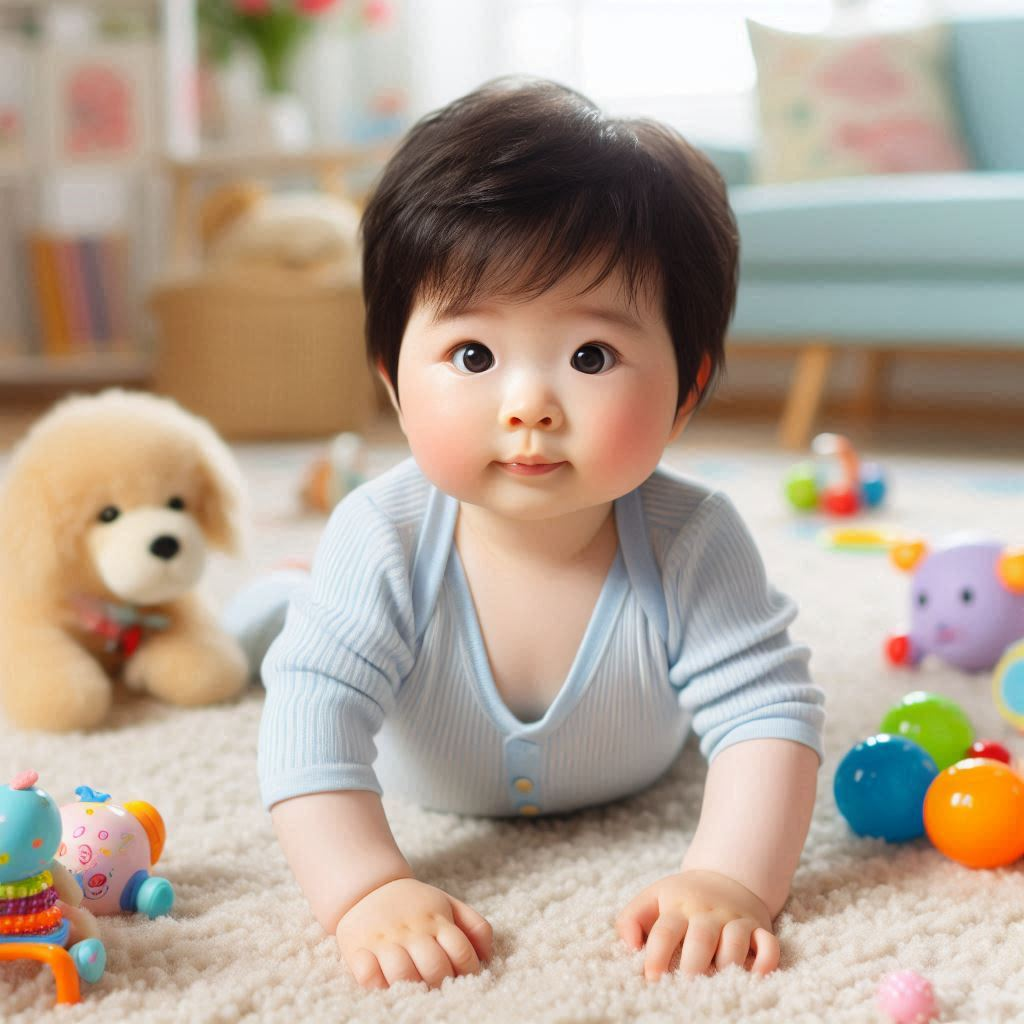Flat Head Baby Can Still Be Fix?
As a new parent, you might feel alarmed if you notice a flat spot on your baby’s head. This condition, known medically as plagiocephaly, is quite common and often treatable. In this comprehensive guide, we’ll explore everything you need to know about flat head syndrome in babies, including causes, prevention, treatment options, and what to do if you spot signs of this condition. Rest assured, a flat head baby can still be fixed in many cases!
Quick Answer: Can a Flat Head Baby Still Be Fixed?
Yes, in most cases, a flat head baby can still be fixed. Early detection and intervention are key. Treatment options range from simple repositioning techniques to physical therapy and, in some cases, helmet therapy. The earlier you start addressing the issue, the better the chances of correction.
Understanding Flat Head Syndrome: More Than Just a Bump in the Road
Flat head syndrome, or plagiocephaly, happens when a baby’s head develops a flat spot, either on one side or the back of the skull. This condition is most common in infants because their skulls are soft and moldable, making them more likely to change shape when under constant pressure. There are two main types of plagiocephaly: positional (or deformational) and congenital.
- Positional Plagiocephaly: This is the most common type and usually occurs when a baby spends a lot of time lying on their back. The “Back to Sleep” campaign, which successfully lowered the risk of SIDS, unintentionally led to more cases of positional plagiocephaly because babies were spending more time sleeping on their backs.
- Congenital Plagiocephaly: This rare condition happens when a baby’s skull bones fuse too early in the womb, causing an unusual head shape that often needs surgery to correct.
Read Here: Classic Baby Books: For Every Nursery
What Causes Flat Head Syndrome? Unraveling the Mystery
Several factors can contribute to the development of flat head syndrome in babies. Understanding these causes can help in preventing or minimizing the condition.
- Sleep Position: Babies who sleep on their backs without changing position are more likely to develop flat spots on the back of their heads.
- Limited Tummy Time: Babies need plenty of time on their tummies while awake to strengthen their neck muscles and take pressure off the back of their heads.
- Congenital Factors: A baby’s position in the womb, especially in multiple births or long labor, can lead to flat head syndrome. Torticollis, a condition where a baby’s neck muscles are tight or twisted, can also play a role.
- Too Much Time in Car Seats or Bouncers: Long periods in devices that limit a baby’s movement can also cause flattening of the head.
The Big Question: Can Flat Head Syndrome Be Fixed?
Here’s some good news: in many cases, flat head syndrome can be corrected, especially when caught early. The treatment approach depends on how severe the condition is and how old the baby is. Let’s break down the most effective treatments:
1. Repositioning Techniques: Simple Yet Effective
For mild cases of flat head syndrome, repositioning your baby can often help fix the flat spot. This involves changing your baby’s head position during sleep and making sure they get plenty of tummy time while awake. Here are some easy strategies:
- Encourage Tummy Time: Put your baby on their tummy while they’re awake and you’re watching them. This helps strengthen their neck muscles and takes pressure off the back of their head.
- Change Sleep Position: Gently turn your baby’s head to the non-flat side during sleep. You can also place toys or other interesting objects to encourage your baby to look in different directions.
- Less Time in Car Seats and Swings: Try to limit how long your baby spends in devices that put pressure on the back of their head.
2. Physical Therapy: Strengthening Little Muscles
If repositioning isn’t enough, or if your baby has torticollis, physical therapy can be a big help. A therapist can teach you specific exercises to strengthen your baby’s neck muscles and improve their range of motion. This can make repositioning work better.
3. Helmet Therapy: Shaping Little Heads
For moderate to severe cases of flat head syndrome that don’t get better with repositioning, helmet therapy might be recommended. This involves using a custom-made helmet that gently shapes the baby’s skull as it grows. Helmet therapy works best when started between 4 and 12 months of age, when the skull is still soft and moldable.
Read Here: Woodland Nursery and Decor: For Your Little Cub
4. Surgical Intervention: A Last Resort
In rare cases of congenital plagiocephaly, surgery might be necessary to correct the shape of the skull. This is typically only considered when the condition is severe and other treatments haven’t worked.
When Should You Worry About a Flat Head?
It’s natural for parents to worry about their baby’s head shape, but not all cases of flat head syndrome need medical treatment. Here are some signs that you should talk to a doctor:
- Persistent Flattening: If the flat spot doesn’t get better with repositioning or if it gets worse, it’s important to get professional advice.
- Uneven Facial Features: If you notice that your baby’s facial features are becoming asymmetrical, this could be a sign of a more serious condition.
- Limited Neck Movement: If your baby has trouble turning their head or always favors one side, this could be a sign of torticollis, which might need physical therapy.
A Real-Life Story: Emma’s Journey with Plagiocephaly
Let me share a story about Emma, a little girl whose parents noticed a flat spot on the back of her head when she was just three months old. At first, Emma’s parents were worried and unsure what to do. They started by increasing Emma’s tummy time and were careful about repositioning her during sleep. Despite their efforts, the flat spot stayed, and by the time Emma was six months old, they decided to see a specialist.
After checking Emma, the specialist suggested helmet therapy. Emma’s parents were hesitant at first, but they decided to go ahead with it. Emma wore her helmet for 23 hours a day for the next three months, with regular check-ups to see how she was doing. The results were amazing; by the time Emma was nine months old, her head shape had improved a lot, and the flat spot was hardly noticeable.
Emma’s story shows how early action and the right treatment can make a big difference. While every child’s situation is unique, the key is to get advice early and explore all the options available.
Preventing Flat Head Syndrome: An Ounce of Prevention
Preventing flat head syndrome is always better than treating it. Here are some proactive steps parents can take to lower the risk:
- Start Tummy Time Early: Begin tummy time as soon as your baby is born. Even a few minutes several times a day can make a big difference.
- Rotate Sleeping Positions: Change the direction your baby’s head faces each time you put them in their crib. This helps prevent constant pressure on one area of the head.
- Limit Container Time: Cut down on the amount of time your baby spends in car seats, swings, and other devices that restrict movement.
- Use Different Holding Positions: Hold your baby in various positions, such as upright or over your shoulder, to reduce time spent lying on their back.
Hope for Flat Head Babies
Flat head syndrome is a common condition that can worry parents, but the outlook is generally positive with early intervention. Whether through simple repositioning techniques, physical therapy, or helmet therapy, there are effective ways to correct and even prevent flat head syndrome. If you’re concerned about your baby’s head shape, don’t hesitate to seek advice from a healthcare professional. Remember, the earlier you take action, the better the chances of full correction.
By understanding the causes and treatments of flat head syndrome, and taking proactive steps, you can help ensure that your baby’s head develops normally, allowing them to grow into a healthy and happy child. A flat head baby can still be fixed, and with the right care and attention, your little one’s head shape can improve significantly.

Jessica Winter is a passionate parenting blogger with two years of experience guiding new and seasoned parents through the joys and challenges of raising babies. Her insightful posts blend personal anecdotes with expert advice to offer a warm and practical perspective on modern parenting.

